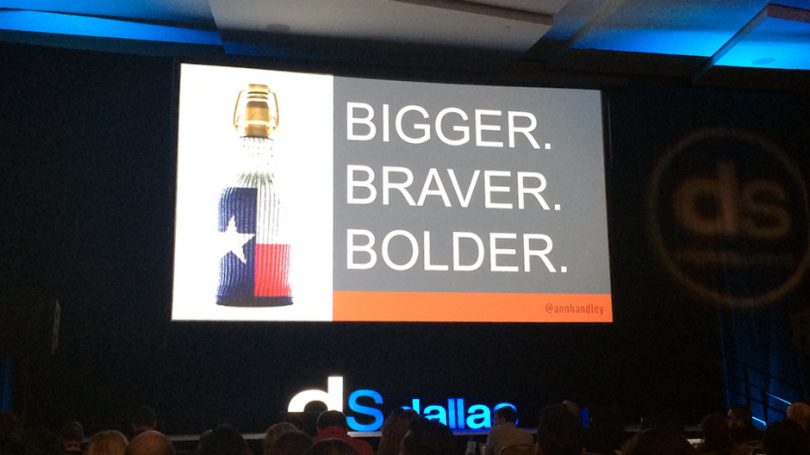Are You Ready for Bigger, Braver, Bolder Content in 2017?

With the ornaments now packed and the leftover black-eyed peas now gone (and I actually ate two heaping spoonfuls this year, so my luck is certain to double, right?)—here we are with a New Year stretched before us.
By now, your 2017 content planning may already be complete or at least well underway. But as you begin to actually put those plans into practice, it’s important to keep asking yourself (and your team): how can we push the boundaries on our content program a little bit further this year?
Content programs are beginning to mature, including more cohesive content strategies and better content creation processes, according to Content Marketing Institute’s 2017 Benchmarks, Budgets and Trends. And this maturation can be seen across both B2B and B2C environments.
In other words, we’re beginning to figure this content puzzle out a little more. We’re developing sound content plans that integrate across our channels. We’re establishing better content creation processes. And we’re socializing that content effectively.
Now that we’ve mastered the content marketing basics, the key to winning in 2017 will be creating content that truly connects and engages.
At the recent Digital Summit Dallas, content was naturally the centerpiece of the conversation. While many great insights were shared, one of the best summations of how to elevate content came from MarketingProf’s Ann Handley. In her keynote, she discussed how we can arrive at what she dubbed, “bigger, braver, bolder content.”
The Big Story Sets You Apart
Producing content itself isn’t the issue—it’s producing content that truly connects with audiences that matters most in creating engagement. And that means creating bigger content—with bigger stories, bigger appeal and bigger meaning.
“My philosophy is that creating content is far more about brains than budget,” said Handley. “You have to first think through what you want to accomplish. The story is the start of what sets you apart.”
So that means exploring the thing that makes your brand seem different—and then putting your brand into a context of what people really care about. At the end of the day, how can you create content that doesn’t feel like marketing? Because if your competitor could find and replace your company’s name in that blog or tweet, then chances are, it’s not reflecting your true brand story.
You Set the Tone
We’re all familiar with that old adage in personal communications that, “it’s not what you say, but how you say it.” And over the years, I’ve come to believe that’s true when it comes to our content as well. Certainly, the tone of voice used in your content should mirror that of your brand, but it should also resonate within your audiences. Handley takes that another step further, contending that brave content is what truly sets organizations apart.
“Tone of voice is the bravest, gutsiest step because it’s our tone of voice that reflects our culture, amplifies our stories and creates empathy,” she explained. “The biggest missed opportunity in content is playing it too safe.”
This is particularly true in the B2B space, where communicators tend to mistake being matter-of-fact (read: boring) with being authoritative. That’s why it’s essential to go through the process of discerning your unique brand voice and identifying your core brand story. These elements then serve as the underpinning of what you say—and how you say it.
Reach Beyond the Status Quo
Once you’ve identified the bigger, braver story only you can tell, then it’s about how can you tell that story in bolder ways? According to Handley, that means disrupting the fairy tale and going beyond the status quo in your industry, adding that this includes moving beyond the jargon to write to audiences in more approachable ways.
For example, I recently had a conversation with a general manager of a public utility, and we discussed that, at the heart of it, what the utility does is connect people. Sure, that’s connecting them to power generation, be it electric, solar or wind. But there’s also a deeper story of connection that impacts citizens’ day-to-day lives—whether that’s studying late at night, preparing and enjoying a meal with family or warming their home for the holidays.
Taking a similar approach to bucking the status quo, Handley pointed to companies like GE who are stepping beyond traditional bounds to create bolder content. GE developed a hit podcast, “The Message,” produced more like a 1940s era sci-fi thriller, and the series was such a hit that GE is producing a second called, “LifeAfter.”
At the end of the day, delivering great content is about getting back to the basics of storytelling. It’s looking beyond the sides and sizzle to get back to the meat of what your audiences care most about. And that’s a good thing because I, for one, still hate black-eyed peas.